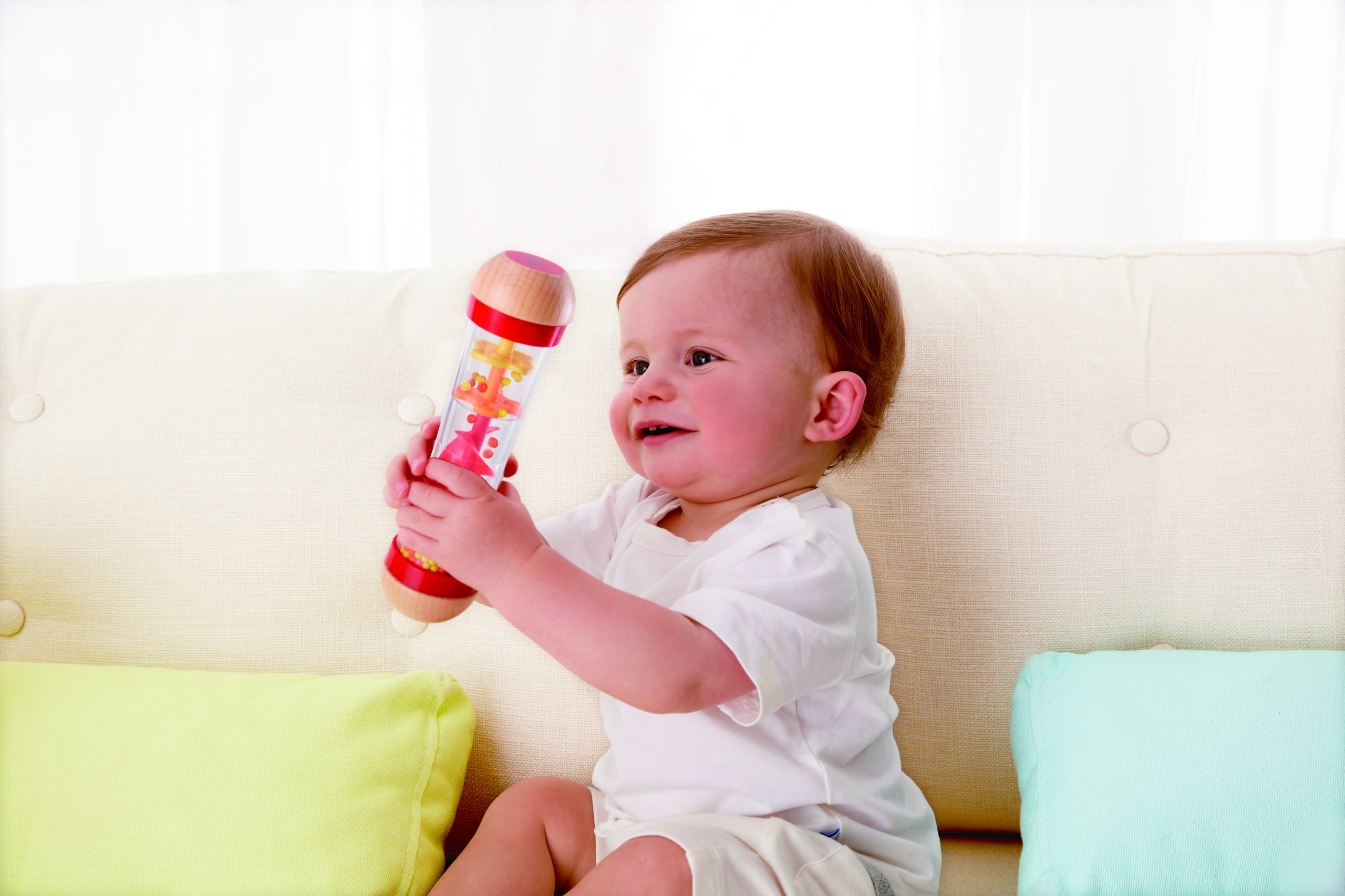01 November 2023
5 min.
Navigating through piles of parenting books, forums and advice from well-meaning friends doesn't always equip us for those moments when our baby cries, and we're left guessing: Hunger? Fatigue? Maybe they're just craving our attention or feeling a discomfort we haven't detected yet?
While we can’t tell you what, exactly, your baby is trying to communicate, there is a vital connection that can help us calm their cries when all else fails: music! Join us as we fine-tune our understanding of how babies connect to music and how it can help to calm their cries.

Before we jump into music’s relationship with babies, remember: all babies cry. It’s their way of communicating with us since they can’t use words yet. Over time, most parents learn to identify their baby’s specific cries, much like understanding a secret language.
Sometimes it signals hunger; sometimes it’s a call for sleep or simply a declaration of boredom. Yet, there are days when even the most intuitive parents feel stumped. What does this particular cry mean?
Most parents develop tricks to soothe babies when they can’t understand what their cry is trying to communicate, but what about those times that you can’t get them to calm down? If you’ve tried everything you can think of, you should give music a go.
Music has long been recognised for its calming effects on children, and child psychologists emphasise the significance of tunes in child development. Lullabies, used across generations to temper babies’ moods, possess a unique ability to soothe restless infants.
Scientifically, calming music has been shown to reduce cortisol levels, the hormone linked to stress, resulting in more relaxed babies. Additionally, music can increase dopamine levels, which promote feelings of happiness.
Whether it’s the familiar whoosh of the womb, a classical piece, or even a rock anthem, exploring different sounds might just reveal your child’s preferred calming melody.
Research shows that music has an impact on babies’ moods and emotions. But the best music of all? Your own voice. While it’s not necessarily music, your voice will have similar calming effects.
This applies to not just moms, but dads too. As babies grow, they develop a connection to your voice’s unique pitch and sounds. In fact, they start developing this connection while they’re still in the womb.
The sound of your voice signals to your baby that they’re safe and loved, which is why child psychologists advocate for talking to your baby whenever you have the chance. This communication helps deepen the ever-important bond between you and your baby.
And remember, whether you’re speaking or singing, you don’t need a perfect voice. Your baby loves hearing you talk and sing, no matter how you sound. Of course, it’s not possible to always be with your baby to talk and sing to them, so what about other calming sounds?

Some sounds that don’t necessarily fall under the guise of music can have similar calming effects on infants. Sounds like rainfall, ocean waves, or a steady heartbeat echo the constant sounds babies heard in the womb, evoking soothing and safe feelings.
In some cases, even household items like vacuum cleaners or hair dryers can have an unexpectedly soothing effect. Every baby is unique, so it might take some trial and error for you to find the right sound or melody to whisk your baby off to dreamland.
Crafting a lullaby playlist is a thoughtful way for parents to provide a calming atmosphere for their baby. Begin by selecting songs that have a gentle and rhythmic tempo. Traditional lullabies are always a good starting point, but don’t limit yourself to just these.
Instrumental pieces, especially from genres like classical or acoustic, can be incredibly soothing. It’s also perfectly fine to add songs that you personally enjoy and find relaxing.
Over time, you might notice your baby responding more positively to certain songs. Pay attention to these cues and adjust your playlist accordingly. Remember, the aim is to create a collection of melodies that both you and your baby find calming and enjoyable.
Toys that produce sounds or melodies can be valuable tools for parents looking to soothe or distract their babies. When babies are exposed to these auditory stimuli, it can capture their attention and shift their focus away from distress or discomfort.
In fact, the repetitive nature of certain sounds or tunes can be particularly calming for babies, mimicking the consistent rhythms they might have experienced in the womb.
Sound-producing toys can also stimulate an infant’s auditory development, aiding in their overall cognitive growth. As you introduce such toys, observe your baby’s reactions to determine which sounds resonate most with them.
For newborns, Hape’s Beaded Raindrops emit a gentle, rhythmic sound as the beads cascade through the rattle. The movement of the beads engages their visual senses, and little hands will start to develop finger strength as they grip the toy.
Babies who are a bit older will enjoy Hape’s Penguin Music Wobbler. As the penguin wobbles, its soothing tinkling sounds encourage babies to reach, tap and grasp for it, refining their hand-eye coordination during tummy time.

In our journey as parents, understanding our baby’s cues involves a lot of trial and error. Music stands out as a bridge, connecting us to our child’s cues in ways that words sometimes cannot. Through the gentle cadence of lullabies, the comforting hum of white noise, or the chime of a musical toy, we find a shared rhythm with our young ones. While each baby’s symphony is unique, music can be an invaluable tool to create moments of connection and understanding.